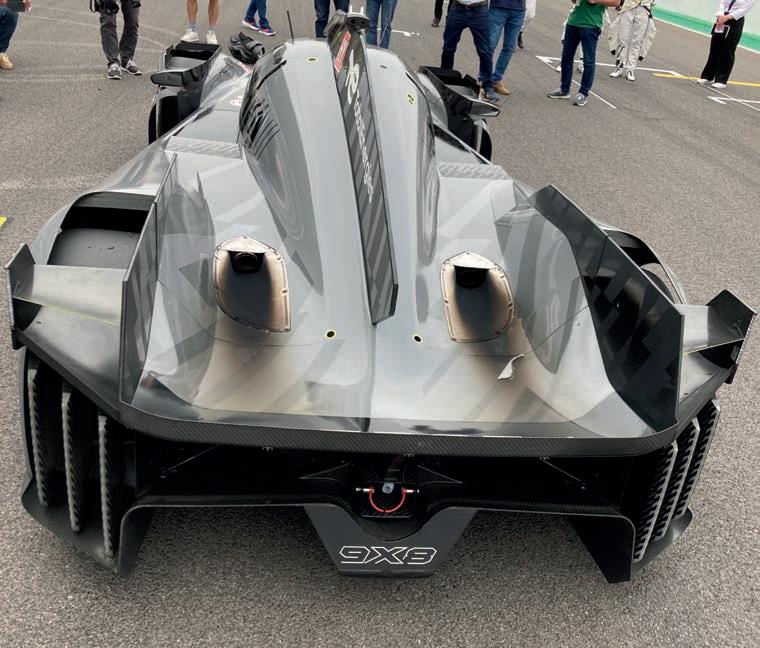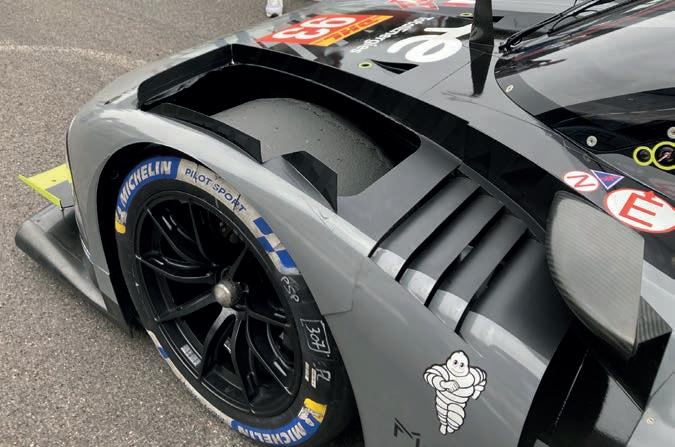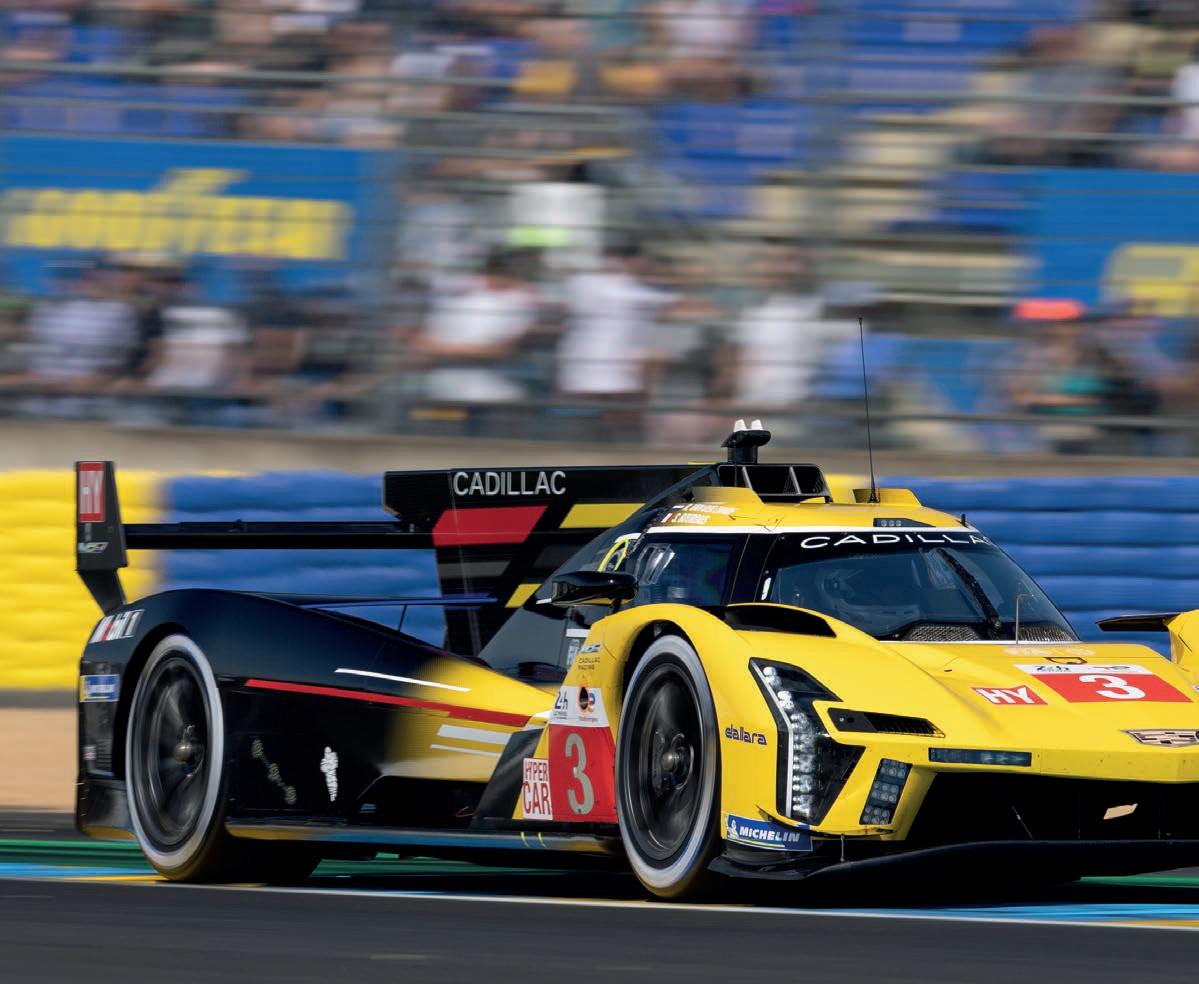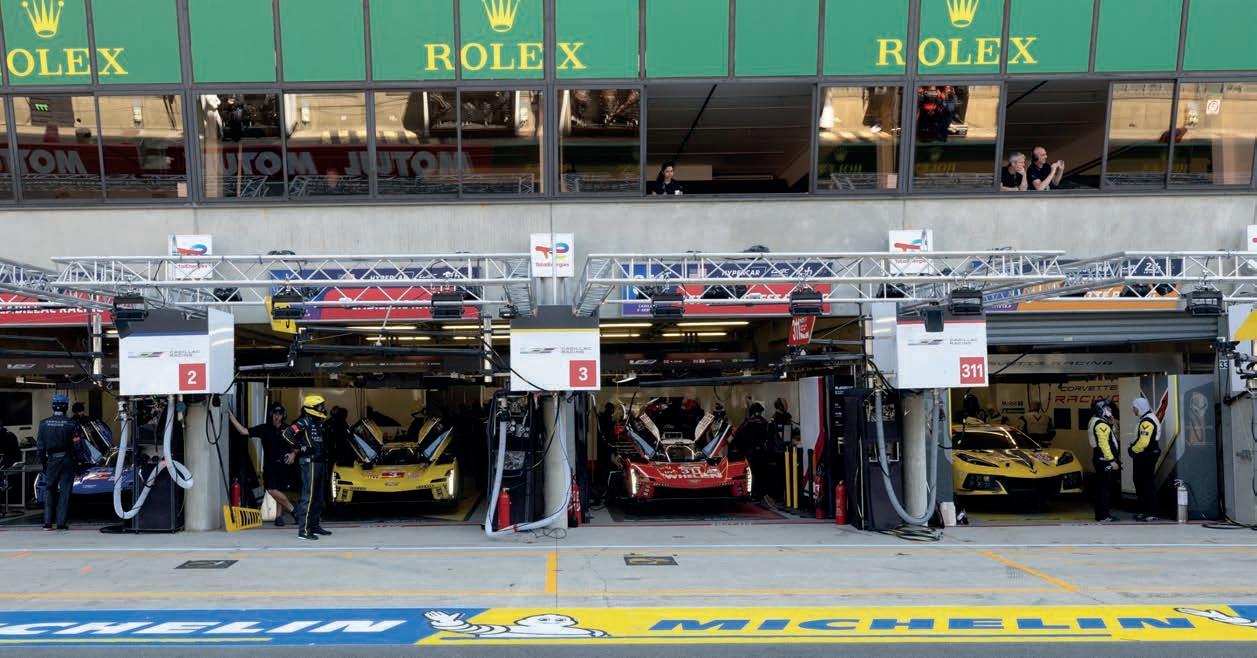LE MANS 2023






>> Development stories of the Hypercars














>> Development stories of the Hypercars







Ferrari’s Finali Mondiali at Imola in October saw the Italian manufacturer unveil the 499P, a Prototype it hopes will deliver world championship and Le Mans glory
 By Andrew Cotton
By Andrew Cotton
It has been a much-anticipated return to top-level Sportscar racing for Ferrari, and its new Prototype, the first since 1973, has delivered. Pole position at the opening race at Sebring, a podium at each round of the championship so far, and it is tipped to be the main challenger to Toyota this year in terms of performance and ability to take that first win of the series. Ferrari has long been present in GT endurance racing, but it has been more than 50 years since it last won at Le Mans. In the interim, the brand has been successfully represented in GT racing by the Squadra Corse arm of the company for over 20 years, in partnership with Amato Ferrari’s AF Corse team, and that relationship will continue with the new Prototype.


One of the major talking points of the 9X8 is, of course, its aerodynamics. Peugeot finalised the design of its car, with non-downforce generating rear winglets and a focus on an adjustable front device. According to the technical team, that combination opens up a wider window of adjustment for the car.
‘The classic way of doing it is that you can adjust your rear downforce [with a rear wing], but the way that we do it you will balance the front and the rear together,’ says Jansonnie. ‘The purpose of this device is to change the aero balance, because you need to adapt for different drivers, tracks and conditions.’
Peugeot’s previous Le Mans 908 diesel programme was cancelled in January 2012 due to financial constraints on the company at the time, and so it never competed in a round of the WEC, which started that year. The experience of running the very high downforce hybrid cars was therefore missed and, says Jansonnie, is a loss to the team.
‘We had to be a bit more cautious, because the experience we have is more limited than the others, so we had to take a range of adjustments that was a bit big. That is why we chose this concept, because the range of adjustment is bigger than just a wing, but you still have to still stay within the performance window [set by the regulations].
‘We spent quite a lot of time on it. We felt that it was easier to get a big adjustment of balance in a very tiny window.’
The homologation for the unusual aerodynamics was not simple, admits Peugeot. Although the basic downforce levels prescribed by the regulations were relatively easy to hit, a lot of work was needed to keep the car in line with the performance windows set by the FIA and the ACO.

These windows, which set downforce and drag maximum and minimum levels, are narrow, and the range of aerodynamic adjustment of the car, including rake angle, wing adjustment and ride height, must keep it within them at all times.

‘When you go to the wind tunnel, what you are trying to achieve is actually very difficult,’ says Jansonnie. ‘The window is tiny, and we repeated [our tests] quite a lot, privately, before homologation.
‘It is difficult to be right in the middle of the box, which is where we wanted to be, so we have increased drag, and there are many items on the car that show that.’

‘We chose this concept, because the range of adjustment is bigger than [with] just a wing, but you still have to still stay within the performance window’
Olivier JansonnieTesting at Portimão in May gave the team the opportunity to run the car in hot temperatures for the first time, putting under pressure its cooling concept, as well as Michelin’s tyre A rear flap was added to help increase drag, necessary to keep the 9X8 in the required performance window before racing starts
Peugeot Sport has signed a multi-year partnership with Marelli, a leading global automotive supplier with extensive expertise in the field of motorsports and high-performance technologies. This crucial technological partnership is based on the development of the most efficient electric solution to match the extreme performance requirements of the hybrid powertrain system on the 9X8 Hypercar.
Specifically, Marelli is providing the engineering and supply of the bespoke, high-performance electric motor and silicon carbide-based inverter that are part of the front axle electric traction system. The focus of the development is to maximise efficiency and reliability in the system, while adapting the motor and inverter technology to make effective use of the weight and volume allocated by the team.
‘We are excited by this new collaboration with Peugeot Sport,’ said Riccardo De Filippi, head of Marelli Motorsport. ‘We already have a long and glorious tradition of collaboration with them in endurance racing, and we both share a great heritage and technical tradition in motorsport competitions.
‘Once more we put all our competences together to push the performance of a unique and extreme car to the limit in a sustainable way, with the adoption of advanced Marelli electric powertrain technology.’

Of these, one of the more noticeable parts is a flap on the rear deck.
One of the key performance parameters of the car is weight distribution. The actual distribution is close to 50-50. That was part of the original design targets for the concept, and one of the reasons why Peugeot was not able, or willing, to change its tyre size to the 29/34 configuration used by its competitors, including Toyota.
Originally, the tyre size plan by regulation was to use the same size all round, and this was selected by Toyota in the first iteration of the GR010 that raced in 2021. However, LMDh convergence meant that a four-wheel-drive car would have to compete with a two-wheeldrive car in the same class, and have the same chance to compete. To make that work, they would need to restrict the advantage of 4WD.
The idea was then to have all cars competing on narrower front, wider rear tyres, and Toyota made that switch in the 2022 version of the GR010. For all 4WD cars, there was a change to the deployment speed of the ERS, but Peugeot was not able to accommodate that same change to tyre sizes before it made its debut.
‘We had the discussion with them during the summer of 2021, when the regulation changed,’ admits Jansonnie. ‘We considered changing the tyre sizes then, but it would have been complete chaos in our schedule, and our budget. The car has been designed with the clear concept of running as much weight distribution forward as possible, and everything is connected to that – the lack of a rear wing, the packaging of the car, it is all very coherent, and that implies running the larger front tyres.
‘We made a proposal to try to increase the rear tyre size and keep our front tyre size, which would have been an increase in performance, but that was rejected at the time.
‘Then, a few months later, the FIA and the ACO came back with the proposal to re-open the homologation for 29/34 tyre sizes for LMH, so we had to consider it. We put everything in balance, we discussed it deeply with Michelin, we ran simulations for between six and eight weeks, and finally had to decide not to change anything.’
There are rumours that Peugeot will build a new car for next season, although by regulation it will not be required to run the different tyre sizes front and rear. The regulation changes will probably steer the team that way, though.

‘The more you test, the more you have a list of things you would have done differently,’ says Jansonnie. ‘It is better to [continue with] the concept that you have, but starting again from a clean sheet of paper we would do it differently. In parallel, we have a list, and if we have the chance to do another car, or an upgrade, we will do that.
‘We will use our jokers, certainly. It is a balance of bringing a small package in six months or a year, or a bigger package in 18 months. Since you are only given the chance to do one evo per cycle, you had better have the right target and the right strategy.’
One item that the team did have to include, though, was the cockpit-adjustable anti-roll bar. Legal in the LMDh rule set from the start, the organising bodies tried to bring the concepts as close together as possible to help with performance balancing.
‘In the end, the decision was to allow it for everyone, rather than ban it,’ says Jansonnie.
‘It was not our choice, and so we have to re-design this and integrate it into the car.’ That is not the work of a moment. While the change might look minor from a regulation standpoint, it’s a major change in the
‘The car has been designed with the clear concept of running as much weight distribution forward as possible, and everything is connected to that’
Olivier JansonnieThe 9X8 competes in the WEC wearing numbers 93 and 94Fences around the wheelarches were a late addition to try to meet stability criteria in the event of yaw

It was no surprise to see Cadillac commit early to the new LMDh regulations, as the company had a stunning run of success in the old DPi era of the IMSA WeatherTech Sportscar Championship. Continuing the programme was therefore a natural progression, but the surprise was confirmation that the project would also include a team running the FIA World Endurance Championship, including the Le Mans 24 hours.
By Andrew CottonThe LMDh rule set allows the same Prototype to compete in both series, and Cadillac grasped the nettle. The Chip Ganassi Racing team stepped up to run cars in both
series, and immediately found success. The second race of IMSA’s LMDh era, the 12 hours of Sebring, was won by Cadillac, and the US manufacturer won again in California later in the year. In the WEC, though, where competition includes LMH cars, it has been a little more challenging.

A penalty in the opening race of the WEC at Sebring, and tripping over a slower car at Portimão affected its results, but it was clear the LMDh manufacturers needed a little help to get closer to their LMH counterparts, and so a new Balance of Performance table was produced just before Le Mans, giving them just the help needed.

It has been more than 20 years since the Cadillac name was seen at Le Mans, and the V-Series.R has already proven strong in competition on both sides of the AtlanticRun by Chip Ganassi Racing, the Cadillac made a strong start in the IMSA series, winning at Sebring and in California, but has so far had a harder time in the WEC
Cadillac had already stepped up to a two-car assault in the six-hour race at Spa, but the extra car – a spare tub rather than a regular team racecar – caught fire in practice. Then, during the race, an electrical failure caused the car’s power steering system to fail, which led to Dutchman, Renger van der Zande, crashing heavily.
He was unhurt, but the pressure on the team, and more particularly the spare parts department, grew following the accident, in preparation for Le Mans.
Selecting Dallara as the development partner for the LMDh programme was not a complicated decision to make. The two companies had worked together in the DPi era, and won titles in the US, as well as the major races at Sebring and Daytona.

The Italian company has, at its heart, the LMP2 car, and this is supposed to be the future of that category. However, according to GM programme manager, Laura Klauser, it worked the other way around, in that the LMP2 doesn’t start until 2026, while the LMDh cars hit the ground now.

‘The LMP2 doesn’t launch until 2026, and Hypercar was first, which means we were looking at it holistically from the get go,’ says Klauser. ‘Just as in DPi, Dallara and Cadillac have been together and BMW joined the mix, but even then we found a way to make this work. The base car is good for both BMW and Cadillac.
‘We worked on it together, it was an integration exercise. Dallara had to fit within the rules of LMP2, but Hypercar came first, so the LMP2 rules have been based on what happened for Hypercar. LMP2 was secondary. Everything has


been built around what Cadillac needed, and then what BMW needed.’
The brake and suspension set-up, the so-called ‘spine’ of the car, were decided upon together and are now common on the Dallara spine for whichever manufacturer chooses them in the future. What is also locked in is the hybrid system, with a battery from WAE, gearbox from Xtrac and motor generator unit (MGU) from Bosch.
Porsche undertook much of the development work for the hybrid system as it was first on track. As it was a common part that was being developed, the team was able to lean heavily on the manufacturers that were not yet running as they quickly ran out of components.
‘Sometimes we had wiring, or they did, and we passed things around, probably more than we should have,’ says Klauser. ‘It has gone both ways, though, everyone has brought stuff to the table.’
The collaboration was almost unheard of in racing, but everyone knew the hybrid system that is now common across all of the LMDh manufacturers would have to work by the Daytona 24 hours in January 2023. Quite simply, there was no time for playing games.
‘There was a lot of development still taking place up to the Rolex, and since then,’ says Klauser. ‘It was not a ready-to-go system when it went into the car in July last year, but we were able to turn laps. Porsche did a lot of heavy lifting, as did Bosch and WAE, so that by the time we got to put our car on the track it could move under its own power.
‘The refinement side needed to be addressed, but when we came on board, it was the same time as Acura and BMW came on board, so that was that much more data that they were getting.’
‘We worked on it together, it was an integration exercise. Dallara had to fit within the rules of LMP2, but Hypercar came first’ Laura Klauser, GM programme managerAt Le Mans Cadillac entered a three-car team for the first time, alongside a GTEAm Corvette entry, and Garage 56